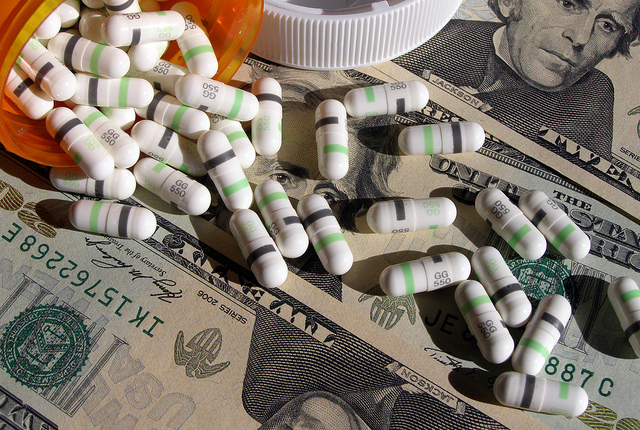The High Cost of Prescription Drugs in the United States, a new JAMA paper by Aaron Kesselheim, MD et al. takes a thorough look at the history of high prescription drug prices in the United States and policies that would rein in these prices. You can read the full article here. Here are some of the key takeaways:
- U.S. per person annual spending on prescription drugs in 2013 ($848) was more than twice as much as the average in 19 other countries ($400). (Top drugs in the U.S. are now three times more expensive than in the U.K.)
- Prescription drugs represent 17 percent of total health care costs in the U.S.
- Net spending on prescription drugs rose 20 percent in the two years between 2013 and 2015. The cost of brand-name drugs has grown significantly; so has the cost of some old generic drugs because of lack of competition.
- Pharmaceutical companies are allowed to set the price of their drugs in the U.S. unlike in any other developed country.
- The principal cause of the high price of prescription drugs in the U.S. is monopoly power given to pharmaceutical companies through patents. The chief way to rein in drug prices is through generic drugs once the patents have expired. But, business and legal maneuvering often extends the length of patents.
- And, even when two or more pharmaceutical companies are offering brand-name drugs in the same class, the lack of price transparency in the marketplace allows companies to keep their prices high; doctors tend to prescribe drugs regardless of price and patients tend to be insensitive to price when they have insurance.
- Pricing of drugs is based largely on what the pharmaceutical companies think they can get for the drug, not research and development costs which represent between 10 percent and 20 percent of drug company revenues. And, since government and insurance are the principal purchasers rather than consumers, the drugs can command higher prices; the government is not allowed to negotiate prices for Medicare and generally is willing to pay for a drug even when lower-cost alternatives are available.
- Prices only come down when generic substitutes hit the market. The more manufacturers offering the generic drug, the lower the price. If there’s only one generic option, the price goes down to 55 percent of the brand-name drug. If there are 13 or more options, the price goes down to 15 percent of the brand-name drug.
- States keep prices from going down as much as they might when they require patient consent before a pharmacist can prescribe a generic version of a drug. Twenty-six states have that requirement. And, in 30 states pharmacists are not required to offer the generic substitute to a patient.
Solutions which, based on the evidence, will not impede innovation:
- Greater constraints on the length of time drug makers have a monopoly on a new drug
- Speedier approval of generic alternatives to high-priced drugs
- Enhanced government power to negotiate drug prices
- More evidence on the comparable value of different drugs for treatment of the same conditions.
Here’s more from Just Care:











…medication costs will continue rising with no ceiling in sight. This is particularly troubling for seniors on Social Security and Medicare thanks to the Bush administration saying “no” to Medicare negotiating for lower costs.
However a new threat looms that will ensure more high prices for consumers and big profits for Big Pharma , the TPP trade agreement. Not only will it continue to allow them to set prices as they please, but also to extend patents on medications (often paid for in part by taxpayers thought research grants) which would keep lower cost generics off the market for a longer time allowing them to keep gouging us.